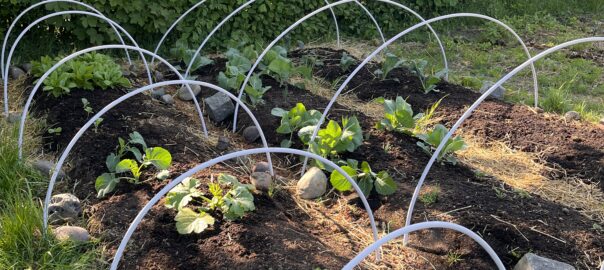Gardening is not just a pastime; it’s a journey towards sustainability and harmony with nature. In recent years, the no-dig (or no-till) gardening method has gained traction among gardeners worldwide for its simplicity, effectiveness, and numerous benefits for both the garden and the environment. This method, which emphasizes minimal disturbance to the soil, fosters a rich, healthy ecosystem beneath our feet, leading to vibrant and productive gardens. Here’s how you can start your no-dig garden and why it might be the best approach for you and the planet.
How to Start a No-Dig Garden
1. Select Your Site: Choose a spot in your garden that receives adequate sunlight, ideally where you want to establish your beds. The beauty of no-dig gardening is that it can be done over grass or existing soil with equal success.
2. Lay the Foundation with Cardboard: Begin by laying cardboard over your chosen site. This layer suppresses weeds and grass, which will decompose over time, adding organic matter to the soil. Ensure the cardboard overlaps to prevent weeds from finding their way through.
3. Add Compost: On top of the cardboard, add a thick layer (at least 5-10 cm) of quality compost. This will be the main growing medium for your plants. Compost enriches the soil with nutrients, encouraging beneficial microbial activity.
4. Top with Mulch or Organic Material: Finally, add a layer of mulch, such as straw, leaves, or more compost, to retain moisture, regulate soil temperature, and further suppress weed growth. This layer also continues to add organic matter to the soil as it breaks down.
5. Plant Your Garden: Now your garden bed is ready for planting. You can plant seedlings directly into the compost layer or sow seeds according to their specific depth requirements. The layers below will support plant growth with a rich, living soil environment.
Benefits of No-Dig Gardening
1. Improves Soil Health: No-dig gardening promotes a vibrant ecosystem within the soil. By not disturbing the soil, you preserve the delicate web of life that includes beneficial bacteria, fungi, and earthworms, all of which play crucial roles in soil health and plant nutrition.
2. Reduces Labor and Maintenance: Without the need to till, gardeners save time and physical effort. This method also reduces the need for weeding and watering, as the layers of organic material suppress weeds and retain moisture more effectively than conventional tilled beds.
3. Enhances Water Retention: The organic layers in a no-dig garden act like a sponge, holding water and releasing it slowly to the plants’ roots. This not only conserves water but also ensures plants have access to moisture during dry periods.
4. Boosts Plant Health and Yield: Plants grown in undisturbed soil with rich organic matter tend to be healthier and more productive. The improved soil structure allows better root penetration, while the nutrient-rich environment supports vigorous growth and higher yields.
5. Environmentally Friendly: No-dig gardening reduces the carbon footprint of gardening. Tilling releases carbon stored in the soil into the atmosphere, but by avoiding disturbance, carbon remains sequestered in the ground. Additionally, using organic materials recycles waste that might otherwise end up in landfills.
Conclusion
No-dig gardening is more than just a technique; it’s a philosophy that respects and harnesses the natural processes of the earth. By adopting this method, gardeners can enjoy abundant harvests, contribute to a healthier planet, and rediscover the joy of working in harmony with nature. Whether you’re a seasoned gardener or a green-thumbed newbie, no-dig gardening offers a path to a more sustainable, less labor-intensive, and incredibly rewarding gardening experience.
Find our plant kits for kids in the webshop: Ailefo´s Webshop
Follow us on Instagram: @ailefodenmark




